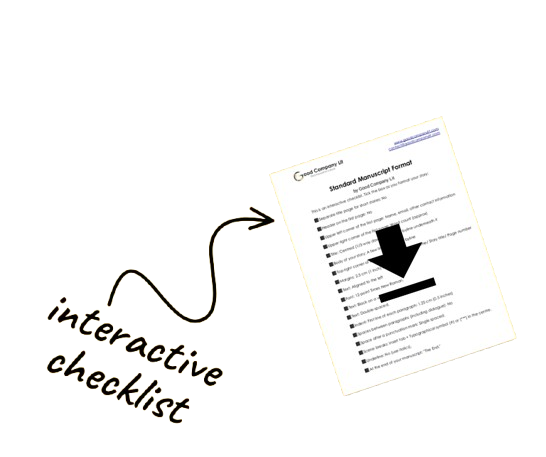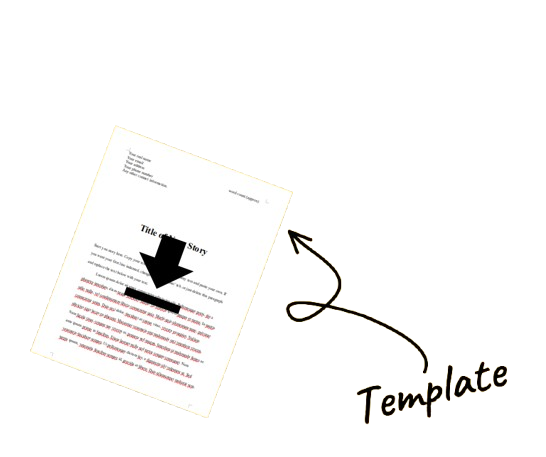You finished your short story or your poem. You’re planning to send it to literary magazines (our magazine, maybe? :)). Before you hit that send button, make sure your piece is properly formatted.
As a new writer, perhaps you don’t see the importance of formatting, but it is important. Take my word for it, or don’t :). But you should take the word of one of the industry’s gate keepers. Literary agent Noah Lukeman, in his book, The First Five Pages, mentioned reasons for a manuscript to end up in the trash bin before being read. You guessed it, poor presentation is the main one.
“It’s inevitably the presentation that is looked at before all else in a manuscript, that can signal unprofessionalism to an agent or editor.”
(The First Five Pages, Noah Lukeman)
So, what will happen if you don’t follow the standard manuscript format? After all, it’s the story that matters.
Yes, maybe for you. But:
- It’s an added cost to the publisher you’ve approached.
- It’s an extra work for the exhausted editor or agent who has to go through a stash of stories that is higher than their, more exciting, TBR pile.
- It indicates that you didn’t read the submission guidelines, or you can’t follow directions. Which means you’re a difficult person to work with.
Unlike for published or established authors, agents and publishers read your work, looking for a reason to reject it, don’t give them one.
“It is a shame that small—and easily preventable—surface errors can be determinants for an entire book, can prematurely prevent you from being taken seriously. On the other hand, these smaller signs may be indicative of a certain broader sensitivity: they may signal a carelessness, sloppiness, ignorance or defiance of the industry’s standards; that the writer doesn’t care enough to do the minimum amount of research to make a manuscript industry presentable. Often when a writer’s presentation is careless, his writing is too.”
(The First Five Pages, Noah Lukeman)
Don’t be that writer. Stick to the industry standards. It will make your story:
- Look professional
- Easy to read
- Have a better chance of being accepted.
“Agents and editors don’t view someone who shies away from the standards as unique or unusual, they view him as a nuisance, insensitive to their wishes.”
(The First Five Pages, Noah Lukeman)
But first, if the magazine or the publisher you’re approaching has specific preferences, in that case, make sure you adjust your formatting accordingly. If no specifications are mentioned, then format your story following industry standards:
- A short story doesn’t require a separate title page (unlike novel’s manuscript).
- Don’t include a header on the first page of your story.
- On the upper left corner of the first page, include your real name, email address, and other contact information.
- On the upper right corner of the first page, include the approximate word count.
- Centre the title of your story about a third of the way down the page with the byline underneath it (your name, or pen name, preceded with by).
- Begin the body of your story a few lines below the byline.
- In the header, on the top right corner of each page, include your last name, story title, page number (separated by a slash(/))
- The margins on all sides of the document should be set to 2.5 cm (1 inch)
- The text should be aligned to the left, not adjusted. Leave the right side ragged.
- The font should be 12-point Times New Roman.
- The text should be in black on a white background.
- The text should be double-spaced.
- The first line of each paragraph should be indented by1.25 cm (0.5 inches)
- No additional spaces between paragraphs (including dialogue).
- The space after a period, or any other punctuation mark, should be single spaced.
- Insert scene breaks instead of skipping lines with the enter button when your story has a jump in time or location. Add a typographical symbol like a hash mark (#) or three asterisks (***) in the centre of the blank line.
- Never underline text in your manuscript. Instead, use italics when needed.
- At the end of your manuscript, write “The End.” This will reassure the editor that there are no missing pages.
There you have it. Now, if your story still gets rejected, it’s surely because of your bad writing, haha, kidding!
Seriously, though, if you get rejected, it wouldn’t be because of the formatting. It could be that your piece didn’t speak to them, which is something out of your control. It’s totally fine. You can’t expect everyone to like your writing.
But if your writing needs improvement, you can learn, you should learn. Writing is an art and a craft.

“The art of writing cannot be taught, but the craft of writing can.”
(The First Five Pages, Noah Lukeman)
OK, now. To make sure you don’t forget anything while you format, we’re offering a free interactive checklist where you can tick the boxes as you format your story.

Here is also, a template you can use. Open it with Google Docs or Word and edit it to your liking. You can copy and paste your story in the body of the template. It will be correctly formatted automatically.
Click on the link and grab these free resources now! Said Link 🙂
